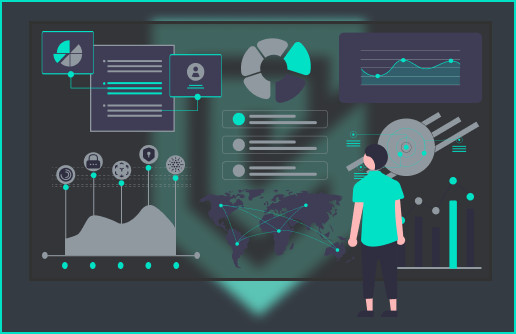Security Information and Event Management is known as SIEM. It is a kind of software that offers a centralized and complete picture of an organization’s security situation to improve detection, prevention, and response to security threats.
Government agencies, financial institutions, healthcare providers, and retail businesses are just a few examples of the wide range of enterprises of all sizes and sectors that implement SIEM systems. They are used to track network activity, log information from various sources, and locate and investigate security incidents.
Collecting, analyzing, and comparing security events from multiple sources, such as network devices, servers, applications, and security systems like firewalls and intrusion detection/prevention systems, is the primary task of a SIEM. Also, a comprehensive overview of security events across the whole IT infrastructure is provided by this system, which collects logs and incidents in real time before normalizing and enriching the data.
Log management tools and SIEM solutions are both used for managing and analyzing logs and event data, although they have different features and main areas of specialization. Log management systems often offer a centralized system for storing logs and include tools for searching, filtering, and analyzing log data. They are primarily used for collecting, storing, and analyzing log data from numerous sources, including applications, servers, and network devices. Tools for log management help uncover problems, perform troubleshooting, and enhance system performance. In contrast, SIEM is a security-focused solution that collects, analyzes, and monitors logs and event data from multiple sources to find and address security threats. SIEM offers a variety of tools for threat detection, incident response, and compliance reporting, in addition to its log management capabilities. SIEM systems provide the ability to compare data from many sources, identify patterns, and trigger warnings for possible security problems. Whereas log management solutions are generally focused on log data analysis and handling, SIEM is primarily focused on security. While log management technologies are not intended for security threat detection, SIEM systems offer tools for both threat detection and response.
Examples for SIEM detection rules
Brute Force Login Detection Rule looks for a number of unsuccessful login attempts for an account coming within a short time range. For instance, an alert will be produced if there are more than 10 unsuccessful login attempts in five minutes.
Data Exfiltration Rule triggers an alert when a large volume of data is transferred outside the network, indicating potential data exfiltration.
Spray Attack Detection Rule recognizes when an attacker makes a few login attempts for multiple accounts within a predetermined time limit to avoid account lockouts. Attackers typically use the same password list during this type of attack. For instance, an alert will be produced if 10 or more user accounts fail to log in at least once within 5 minutes.
Application Access Rule triggers an alert when an application is accessed from an unusual location or outside of normal business hours, indicating potential unauthorized access or use.
Suspicious Email Activity Rule triggers when an email is sent to an unusually large number of recipients, contains suspicious attachments or links, or arrives from an unreliable source. Generally, it may be a sign of phishing or malware activity.
Malicious Website Visit Detection Rule detects when a user visits a website that is recognized as potentially dangerous, such as a phishing website or a website with malware. For instance, an alert will be raised if users visit a website on a blocklist.
Available tools
In the next chapter, several well-known SIEM tools will be described. Each tool has several specifications and advantages over the others, so at the end, you can find a short summary of them.
Splunk
- Creator: Splunk Inc.
- OS: Linux, Windows, macOS
- Splunk has numerous integrations, configurable dashboards, sophisticated analytics and search tools, and machine learning features. Dashboards and visualizations are customizable. Moreover, Splunk offers a robust community and a huge knowledge base.
QRadar
- Creator: IBM
- OS: Linux
- Many integrations, advanced analytical tools, and machine learning technologies are available with QRadar. Also, it is simple to use and compatible with many common technologies out of the box. It also provides support for IE, Firefox, and Chrome browsers. The strong correlation capabilities of QRadar are well known for assisting enterprises in detecting and handling threats more effectively. One of the biggest features is that it has a huge number of integration options by IBM third-party vendors and community.
Alient Vault
- Creator: AlienVault, now part of AT&T Cybersecurity
- OS: Windows, Linux, and macOS
- One of the few platforms offering a variety of security features is AlienVault. It has features for asset discovery and inventory, SIEM event correlation, vulnerability assessment, compliance reports, log management, intrusion detection, email alerts, etc. It may be set up on-premises, on the cloud, or in a hybrid mode. It will automate threat hunting, deploy more quickly, and operate more intelligently.
EventTracker
- Creator: Netsurion
- OS: Windows, Linux, and macOS
- A sophisticated SIEM system like EventTracker offers complete threat detection, log management, and compliance monitoring. Organizations can promptly identify and address possible security vulnerabilities thanks to its real-time threat detection capabilities across several sources. Moreover, the platform gathers, stores, and analyzes log data from numerous sources to assist enterprises in monitoring and analyzing their networks, systems, and applications.
In conclusion, the choice of SIEM system for a particular business depends on a range of factors, including the size and complexity of the business, the type of data and systems being monitored, and the specific security needs of the organization. Each of the SIEM solutions discussed above has its own advantages and strengths, and businesses should carefully evaluate their options before making a decision.
